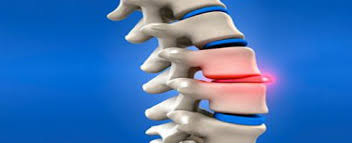Have you heard of the time when the doctor told their patient that they were suffering from a slipped disc? No, neither have I because I just made it up. However, this happens day in day out and unfortunately this poor terminology has led to a raft of badly described problems so that people can understand their complaint better. Our spinal column consists of individual bones which are stacked on top of each other. These bones are called vertebrae of which there are usually seven in the neck (cervical spine), twelve in the middle back (thoracic spine) and five in the lower back (lumbar spine). Below the lumbar spine is the sacrum and coccyx. Separating each of these vertebrae are soft shock absorbers referred to as the intervertebral disc. These spinal discs allow movement while reducing the stress and strain placed upon the spinal column during movements such as walking, running, jumping, lifting, twisting and more.
What Makes Up The Intervertebral Disc?
Each disc consists of two portions. Firstly, a soft inner portion that is called the nucleus pulposus. Surrounding this is a tougher and stronger outer ring called the annulus fibrosis. As we age, the health and integrity of our spinal discs diminishes and therefore leaves us at greater risk of suffering injury. Particular injuries may cause the inner nucleus layer to protrude through the outer layer. When someone refers to a slipped disc, this is what they mean. It is just sloppy and bad medical terminology! In medicine, depending upon the severity we diagnose this as a herniated, prolapsed or sequestrated disc (i.e not a slipped disc).
Signs & Symptoms Of A Disc Injury
- Pain and numbness that is most commonly one affecting one side of the body.
- Referred pain that is noticed down the arm or leg
- Pain usually worsens with specific movements like bending or twisting
- Generalized muscle weakness in a limb
- Tingling, aching, or burning sensations in the affected area
Who Can Help You?
Disc injuries are relatively easy complaints to manage. Typical management usually includes reducing pain, improving mobility and finally returning strength to pre-injury levels. Treatment may consist of spinal manipulative therapy, mobilisation, stretching and home exercises.


Recent Comments